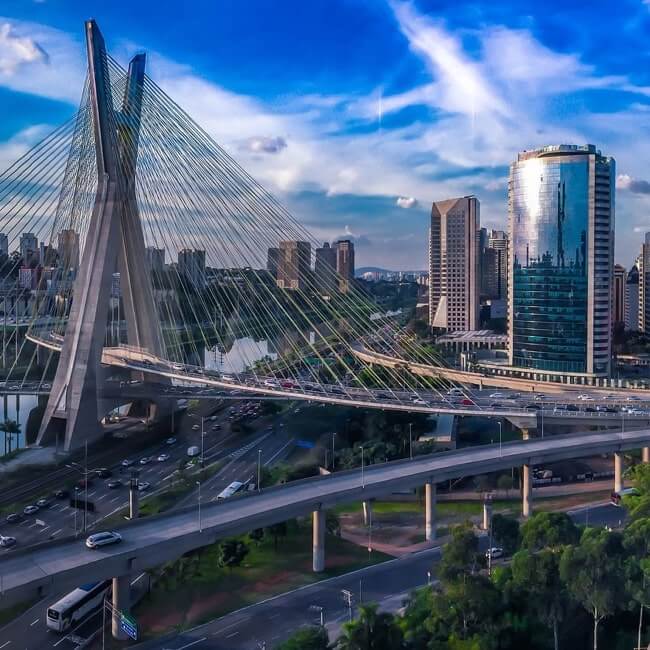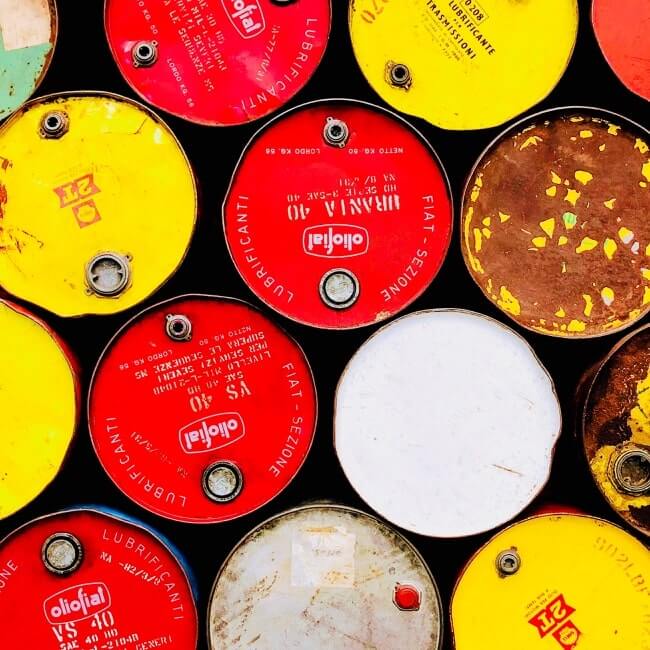LatAm spectrum auctions: state of play
With the economic and health crisis resulting from the COVID-19 pandemic, the telecommunications market in Latin America is expected to suffer a loss of US$4.3bn in revenues this year, according to IDC.
The lack of financial and macroeconomic clarity has significantly reduced incentives for new investments in networks and equipment, at least in the short and medium term.
The research firm said this week that 43% of companies in Latin America are expected to reduce their telecommunication services spending this year, while 35% plan to increase spending following the coronavirus pandemic.
Fitch Ratings estimates the crisis will lead to a cut of up to 30% in investments by telecom companies in Latin America this year.
The industry endured a tough first quarter with GDP taking a hit across the region, so pushing ahead with 5G spectrum auctions this year is losing appeal.
The roadmap for bidding and investments in spectrum has become blurred, with some postponements of processes already confirmed by regulators and other delays being just a matter of time.
BNamericas provides an update on 5G auction plans throughout the region. The “when” refers to the latest expected dates for the tenders.
ARGENTINA
When: 2021
Why: The third largest Latin American economy, Argentina is behind its peers when it comes to 5G preparation. Talks are still in a very early stage on how the technology will be deployed.
The country concluded last October a public consultation on a 5-10 year new spectrum policy roadmap. In March, 5G Americas and the Argentine Center of Engineers (CAI) signed a cooperation agreement in which both entities committed to work on the exchange of information for 5G developments, the analysis of technological trends and the discussion of radio spectrum requirements. Therefore, 5G is still a work in progress.
What: A report produced by the government's modernization secretariat with input from the consultation suggests assigning about 500MHz of spectrum in the 3.5GHz (3.3‐3.8GHz) band, around 4GHz in the 24‐28GHz band range and 70MHz in the 600MHz band.
According to the report, the optimal scenario would be to add to the current allocations of 600Mhz and 3.5GHz for 5G in 2020-21 and millimeter bands in 2022-23. “It is not expected that within two years 5G will be developed in the country,” reads the paper.
Citing comments from the local telecoms industry, the report touts the use of very high frequencies (mm wave bands).
"In general, it is considered essential to prepare the scenario and bidding for spectrum in 3.5GHz (which gives coverage and capacity), in the millimeter bands of 26GHz and 28GHz (which gives great capacity and very low latency) and in 600MHz (coverage),” the report states.
“We therefore recommend starting 5G services in the 28GHz band. In this band we are dealing with a high frequency with very good capacity and very low latency that allows us to offer all the services expected with 5G, with ‘hot spots’ coverage-type for areas of high industrial, commercial and government traffic. 28GHz should be followed by 26GHz and 3.5GHz, and then go to 600MHz and 2.3GHz, while migrating all users of the 2G and 3G networks to 4G and 5G."
For telcos and suppliers, although investment capacity does play a role, it would all be a matter of when in terms of network readiness.
"The most optimistic estimates point to the start of the commercial deployment of 5G networks in Latin America only by 2021," Miguel Fernández, CTO of Telecom Argentina, told a local paper in March. Telecom Argentina has “virtualized” the central system that controls its network in 2017 and last year finished the functionalities for 5G in its network of sites.
"Our solutions are fully ready for implementation in Argentina when operators require it," added Juan Bonora, director of public relations for Huawei Argentina.
But: Argentina has other priorities right now. The country is dealing with a possible sovereign debt default and the attempt to mitigate the effects of the coronavirus outbreak on the economy, which will highly likely result the delayed deployment of new technology in the country.
BRAZIL
When: First quarter of 2021
Why: This is now the optimal scenario. With pressure from operators for a delay and pending regulatory uncertainties regarding the terms of the auction, such as the still unresolved technical issue of interference with satellite services and possible reimbursements for cleaning up the 3.5GHz band, it is practically certain that the auction of frequencies for 5G in Brazil, originally planned for the end of 2020, will be pushed to 2021.
In the best of scenarios, the auction will take place in the first quarter of next year, but depending on overall market and regulatory conditions, it could even move to the second or third quarter.
What: Brazil plans to sell about 2GHz of spectrum in the 700MHz (leftovers from the 4G auction), 2.3GHz, 3.5GHz and 26GHz bands. Regulator Anatel considers it the biggest spectrum auction ever in Brazil.
The proposal currently under discussion after a public consultation on the 5G tender divides Brazil into 14 regions and suggests a sequential sale of frequencies. The terms also encourage the sharing of active and passive infrastructure between providers, including towers, ducts and conduits.
The suggestion would result in an auction that does not prioritize revenue collection for the government but focuses on coverage and investment commitments.
But: Among the main topics to be settled before the auction are interference with satellite services in the 3.5GHz band, the participation of internet service providers (ISPs) bidding for regional lots and splitting up the frequencies on offer into smaller spectrum blocks – which telecom operators oppose.
Another unresolved issue involving spectrum, although not directly related to the auction, concerns the successive renewal of the use of spectrum by operators. Vivo, Claro and Oi said that the 5G business model depends on renewing the frequencies in use.
Furthermore, for operators, a critical issue is the sharp depreciation of the Brazilian currency, which makes the imported 5G equipment very expensive and pushes the necessary investments in the network construction up.
CHILE
When: 2021
Why: Chile originally planned a 5G tender for somewhere around mid-2020. But the supreme court is yet to resolve a challenge brought in December by the National Corporation of Consumers and Users of Chile (Conadecus) and Netline, questioning new spectrum limits, which directly impact the 5G tender.
These groups contest what they see as excessive spectrum in the hands of few carriers, with negative effects for competition in the mobile market. National carriers claim that good 5G will require lots of frequency and that the more spectrum, the better the services.
What: Chile is considering four bands: 700MHz, AWS, 3.5GHz, and 28GHz.
"We continue to work on the roadmap to create a 5G national plan, which indicates that once the consultation in the supreme court is resolved, we will immediately be able to award frequencies in the coming months," telecoms undersecretary Pamela Gidi said in March.
Regulator Subtel plans to publish as soon as possible the bases for the public competition for the new 5G network.
Gidi says that several industry players expressed a positive position regarding the plan, since the proposal consists of a mix of bands with dynamic spectrum caps (up to 35%, depending on the frequency), which implies that in future assignments there will be no obligation to review or validate spectrum limits each time a new frequency is awarded.
In the short term, the launch of the tender is important not only so the country is one of the first to activate 5G technology, but also so that companies with less access to bands can opt for them, such as WOM.
But: Without resolving the spectrum caps, bidding at this time puts the participation of firms such as leading players Entel, Movistar and Claro, which have normally participated in these calls, at risk.
COLOMBIA
When: 2021
Why: Like Argentina, Colombia is discussing a long-term spectrum policy roadmap which includes the 5G bands.
Local carriers complain that the reserve value, or minimum price, for an auction is still unknown, which puts the process at risk. The economic crisis also works against the tender.
What: The country’s regulator still has not defined all 5G frequencies to be awarded, but one of them will be the prime 3.5GHz band.
Recently, Colombia finished assigning all permits for the use of spectrum in the 2.5GHz band, acquired by operators in an auction held last December.
Temporarily using 3.5GHz spectrum specially granted, Colombia is advancing with 5G field pilots and demos, which marks a first step towards larger roll-outs.
The government planned to hold an auction after awarding the pilot projects. In early March, before the pandemic, then MinTIC minister Sylvia Costain said the auction could take place at the end of this year or the beginning of next. That has likely changed.
The first 5G pilot is active. Using Huawei’s technology, Movistar Colombia launched earlier in May a service with a special node in the 3.5GHz band.
The project provides coverage for the Bogotá district health board and the public health laboratory via a thermal camera, thus allowing monitoring of body temperature of more than 400 employees of the entity in real time.
MinTIC established a new deadline for those interested in the call for the development of 5G pilot tests to submit a proposal. The new deadline was May 29 and the change was due to the extension of the mandatory preventive quarantine. No update was available as of Friday.
But: Considering the effects of the pandemic and investment uncertainties faced by carriers, it is unlikely that the tender will take place this year, even with the success of the 5G pilots.
MEXICO
When: First quarter of 2021
Why: The tender was expected to take place in late 2020, but after the health contingency it is highly likely that it will be postponed.
What: Regulator IFT has identified around 11,190MHz for potential 5G services in the bidding for spectrum in the 3.3-3.6GHz band, which is at 50% of its utilization capacity.
The country is considering 600MHz and 3.5GHz for 5G.
Mexico is looking at auctioning spectrum in the 3.3-3.6GHz band at the same time as the cleared-up 600MHz spectrum is set to be put on the block during the second half of 2020.
The country is furthermore studying the 2.3-2.4GHz spectrum bands, which are not yet cleared up and the 26GHz, 30GHz, 38GHz, 40GHz, 50GHz, 70GHz and 80GHz bands in the millimeter spectrum wave.
Mexico has been testing 5G technology at least since October and América Móvil (Telcel) and AT&T are set to be the first to launch the technology commercially.
In this regard, the transfer of 50MHz from the 3.5GHz band to Telcel from sister company Telmex, as well as the anticipation of investment of US$91mn by AT&T to secure rights in the 5G bands, favor the two groups.
Huawei is also among the suppliers carrying out tests with the Mexican operators.
But: There are spectrum issues to be resolved and the health emergency brings legal and regulatory, in addition to investment, uncertainties. Nonetheless, unlike in other markets Mexican operators have not been vocal about postponing the tender.
On the contrary, carriers such as América Móvil and AT&T feel ready.
"At the moment, the operators have not mentioned that this event had any effect on their schedules, although they could have possible changes in the spectrum regulatory agenda, although for now, everything is progressing as planned," Alberto Arellano, IDC research manager, told local newspapers this week.
PERU
When: 2021 or 2022
Why: Despite having conducted first tests of the 5G network in the 3.5GHz band and discussions on the auction being underway, the pandemic, together with the legal and commercial issues related to the underuse of fiber backbone RDNFO, have been the priorities.
Investment promotion agency ProInversión has just qualified five companies for a tender that will hire consultants to help design the country’s next spectrum auction.
What: Peru plans to award 830MHz for mobile services in two tenders, the first a two-part 5G tender this year, then the remaining bands to be tendered in 2021, deputy transport and communications minister Virginia Nakagawa told BNamericas in October.
“It’s all in place to meet the deadlines,” she said at the time.
In the second half of 2020, spectrum in the 2.3-2.5GHz bands and the 1.7-2.1GHz bands would be auctioned for 4G and 5G services. This is certainly in doubt now.
The government also released rules for the re-farming of 500MHz to the 3.5GHz band, which is on track to become the most used for 5G in the region.
But: Some say the deployment of this technology may be delayed until at least 2025. This is because the delay in the deployment of 3G and 4G networks adds to the deficiency of the Andean country’s telecommunication towers and antennas.
Subscribe to the leading business intelligence platform in Latin America with different tools for Providers, Contractors, Operators, Government, Legal, Financial and Insurance industries.
News in: Infrastructure (Peru)

Peru invested US$232mn in transportation infrastructure in Q1
Unlike 1Q23, the dynamism in 1Q24 came from a higher disbursement for line No. 2 of the Lima metro and the airport sector.

Áncash Region promotes portfolio of 40 identified projects for more than US$1.5 billion
These are initiatives in irrigation, tourism, urban roads, education, health and public infrastructure to be executed through Public-Private Partne...
Subscribe to Latin America’s most trusted business intelligence platform.
Other projects in: Infrastructure (Peru)
Get critical information about thousands of Infrastructure projects in Latin America: what stages they're in, capex, related companies, contacts and more.
- Project: New Huaycán Hospital
- Current stage:

- Updated:
2 months ago
- Project: Road Network N° 4: Pativilca - Santa - Trujillo and Puerto Salaverry
- Current stage:

- Updated:
2 months ago
- Project: Muelle Sur - Callao container terminal expansion (Bicentenario dock)
- Current stage:

- Updated:
2 months ago
- Project: New Juanjuí Hospital
- Current stage:

- Updated:
2 months ago
- Project: Tito Villar Cabezas Hospital
- Current stage:

- Updated:
2 months ago
- Project: Arequipa light rail (Electric tram)
- Current stage:

- Updated:
2 months ago
- Project: New prison in Ica
- Current stage:

- Updated:
2 months ago
- Project: Autopista del Sol: Improvement, Rehabilitation and Extension Trujillo - Sullana Section
- Current stage:

- Updated:
2 months ago
- Project: Construction, Rehabilitation and Improvement of the Huánuco Highway - La Unión - Huallanca - Dv. antamina
- Current stage:

- Updated:
2 months ago
- Project: Rehabilitation of the Air Side of Cajamarca Airport (General FAP Armando Revoredo Iglesias Airport)
- Current stage:

- Updated:
2 months ago
Other companies in: Infrastructure (Peru)
Get critical information about thousands of Infrastructure companies in Latin America: their projects, contacts, shareholders, related news and more.
- Company: Dirección de Obras
- Company: Consorcio Anillo Vial Periférico
- Company: Barlovento Renovables Latinoamerica SAC
-
The description contained in this profile was taken directly from an official source and has not been edited or modified by BNamericas researchers, but may have been automatical...
- Company: JRC Ingeniería y Construcción S.A.C. (JRC Ingeniería y Construcción)
-
The description contained in this profile was taken directly from an official source and has not been edited or modified by BNamericas researchers, but may have been automatical...
- Company: ZICSA Contratistas Generales S.A. (Zicsa)
-
The description contained in this profile was taken directly from an official source and has not been edited or modified by BNamericas researchers, but may have been automatical...
- Company: Navisan S.A. (Navisan)
- Company: Servicios Industriales de la Marina S.A. (SIMA)
-
The description contained in this profile was taken directly from an official source and has not been edited or modified by BNamericas researchers, but may have been automatical...
- Company: Concesionaria Angostura-Siguas S.A. (Concesionaria Angostura-Siguas)
-
The Consortium Angostura-Siguas S.A. was created under a PPP model to develop the Majes-Siguas II Irrigation Project. It is made up of subsidiaries of the Cobra Group: Cobra Ins...





